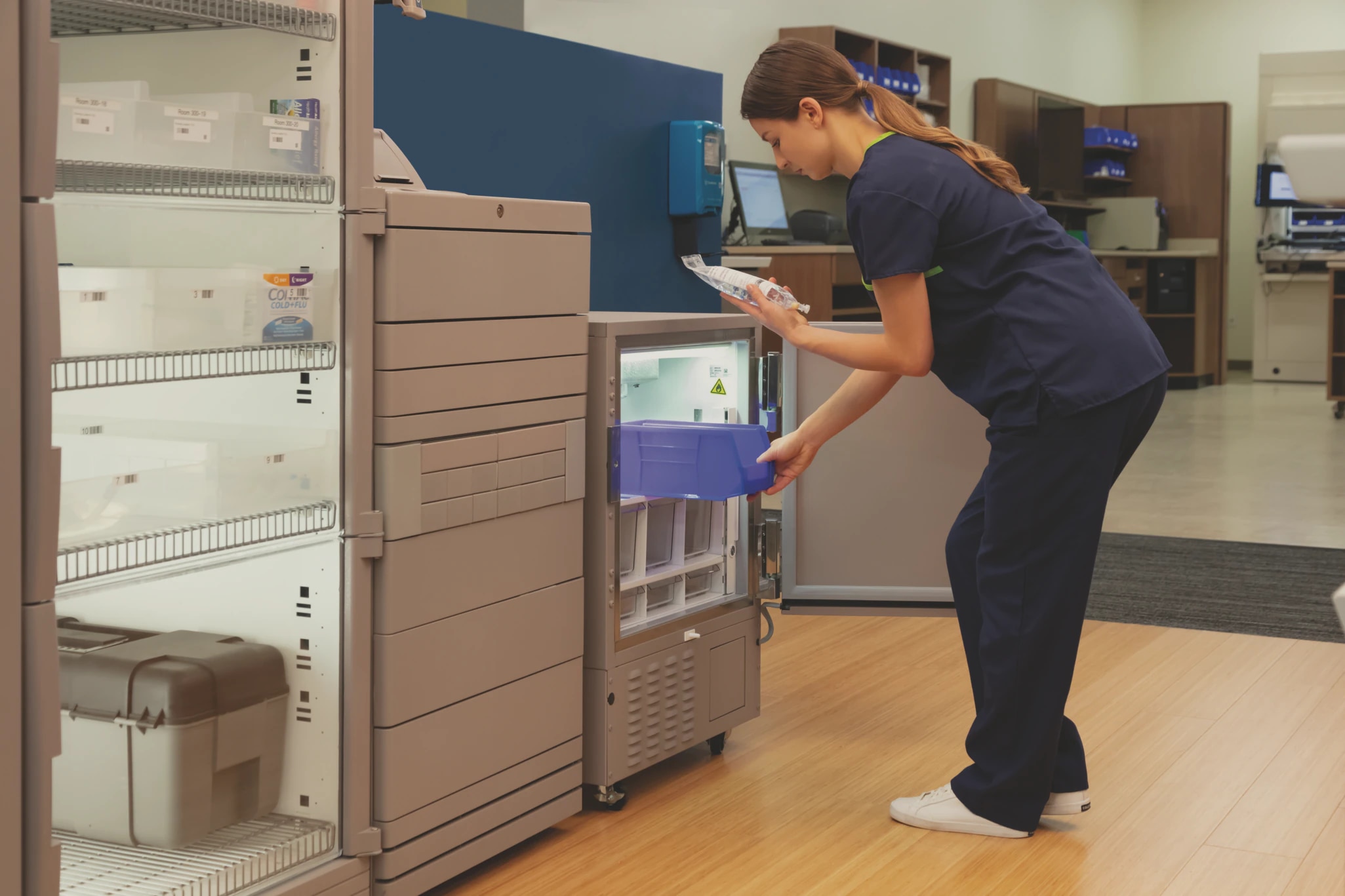Where’s my med?
It’s 9:00 a.m. at Hypothetical Hospital and Nurse Hastings is gathering medications to administer to Mrs. Flannigan in room B222. She has just removed the blood pressure medication from the automated dispensing cabinet (ADC) and is now in search of the patient’s IV antibiotic. She doesn’t see it on the ADC profile and decides to access the refrigerator via override to see if it’s in there. Not finding it, she logs off and calls the pharmacy.
“Did you check the delivery bin on the counter?” the pharmacy technician asks. “I’ll hold while you check.”
“Yes it’s there—I found it,” Nurse Hastings replies. “I thought this required refrigeration?”
“Yes it does, sorry for the confusion. Since it was due at 9:00 a.m. I thought you would be looking for it in the delivery bin,” the technician tells her.
Such is the life of the patient-specific medication: awareness and visibility to delivery and location is generally less than optimal, often resulting in clinician workflow inefficiencies.
